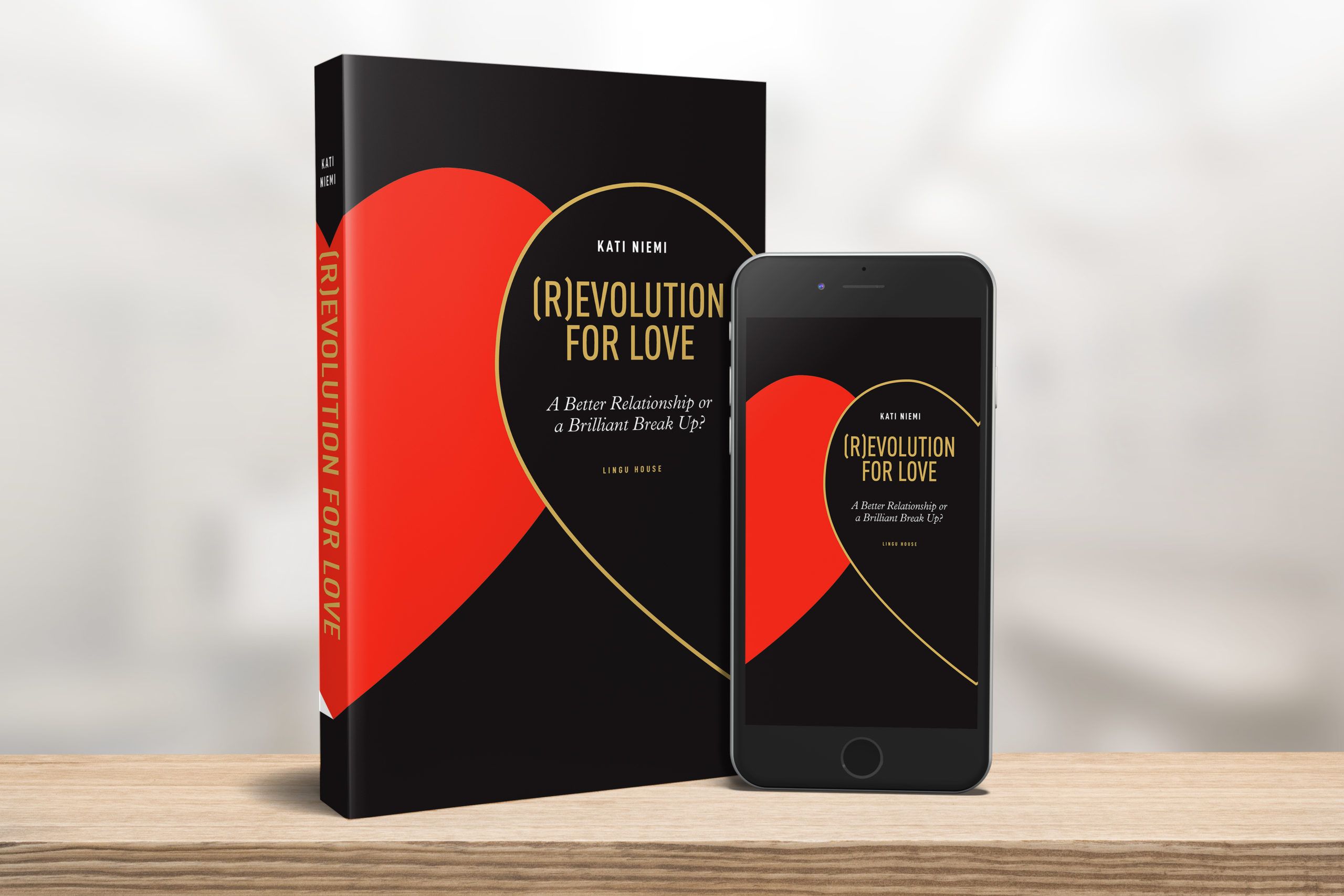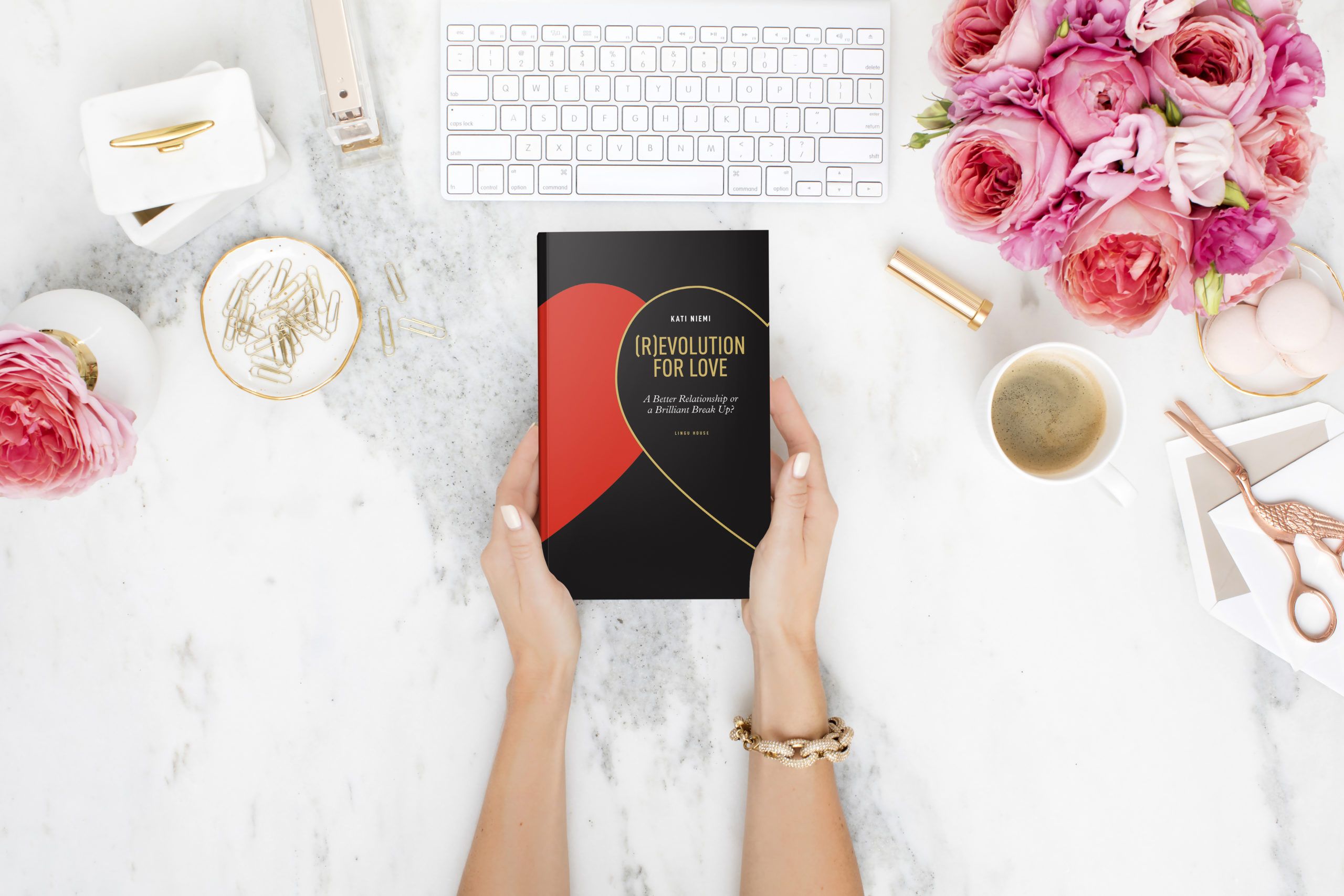Breathing is, of course, necessary for us to stay alive: we can’t hold our breath for too long and survive. But how can we improve our wellbeing by paying attention to how we breathe? It was only today when stress and breathing exercises came up in a meeting attended. That prompted me to write this quick recap of this literally vital topic: how can the correct way to breathe improve our wellbeing? Why are breathing exercise such an effective way to manage stress? And how to breathe during a panic attack? Why is shallow breathing harmful?
A correct way to breathe has become a popular topic of late. That’s excellent news. Most people who are aware of the importance of correct breathing and no longer consider breathing exercises silly, new-age nonsense invented by yogis. A certain breathing technique also plays a vital role in hypnotherapy, both in inducing hypnosis and in monitoring the level of hypnosis.

How to improve your wellbeing through self-development?
Science has revealed: some adults are not mentally sufficiently developed. How to improve your wellbeing through self-development?
Monitoring a hypnotherapy client’s breathing is one of the key skills of a hypnotherapist. A correct way to breathe is the primary stress management tool for the client and one they get to take with them wherever they go!
So let’s find out some more about the wonderful world of breathing!
The correct way to breathe – In this blog post I will be talking about the following- How does breathing actually improve our wellbeing?
- Paying attention to breathing immediately improves our health. Why is that?
- What kind of breathing is especially beneficial?
- What is the correct way to breathe?
- Why are poor breathing techniques harmful?
- Are breathing exercises a good way to destress?
- Why is superficial breathing harmful?
- How come we can manage panic attacks through breathing?
- And what does breathing have to do with my relationship, getting over a break up and every aspect wellbeing ?
This blog post will also give introduce a couple of easy breathing exercises. Through practice, you can activate these techniques automatically if you panic .Correct breathing is also a vital skill in relationships: How to improve your relationship easily in seconds?
How does correct breathing improve our wellbeing in practice?
Picture a nice, gentle moment like this:
- You are chilling out in peace and quiet, lying down or doing something you love. Maybe you’re reading a good book or gazing at a beautiful landscape.
- There’s no rush. You are in the moment.
- Your face is restful or maybe you’re smiling.
- You feel utterly relaxed.
- Your mind is calm.

Physical Exercise for Stress Management and Hormonal Balance
We must learn how to manage stress so it won’t take a toll on our health. Physical exercise is the key to stress management and healthy life.
We often describe a moment of content as being in peace and quiet, with a tranquil mind or feeling relaxed. We feel good when we are restful and relaxed. From that position, seeing and paying attention to your loved ones more gently and positively is easier. Read more in this article: How to improve your relationship easily and quickly in seconds?
When we feel relaxed and well, our heart rate slows down and our blood pressure drops. Stress is not driving our body to fight or flight, and your muscles don’t have to be prepared for anything. Your digestion is working and there is no hormone rush interfering with your thinking. The blood is circulating freely in the brain and your mind is clear. This creative state, also known as the flow, is a tool you get to take everywhere with you. When there’s no rush, ideas and loving thoughts have space to emerge. Relaxation has several mental and physical benefits.
One important sign of wellbeing is also the slower and steadier breathing we automatically adopt when relaxed.
So, breathing and wellbeing go hand in hand, but why?
Why is breathing so important to our wellbeing?
Because breathing is a key factor in our autonomic nervous system. The brain, on the other hand, is the director who oversees the functioning of the autonomic nervous system. It monitors our psychophysical and holistic wellbeing, thoughts, and emotions. In the “bodymind,” everything comes together. We are one entity. And breathing has a relevant role to play here.
We breathe automatically, without thinking. But we can also control our breath consciously.

Stress Management: 10 Tips How to Prevent & Reduce Symptoms
How to prevent, manage and reduce stress in a busy life? Causes and symptoms of stress, and good tips for stress management and wellbeing.
Calm breathing brings a relaxed feeling and sense of wellbeing, but why should we control or consciously think about breathing? Why does paying attention to breathing promote relaxation and wellbeing?
It used to be thought that only the subconscious affects the involuntary, autonomic nervous system. It would follow that we could not really, consciously activate the parasympathetic nervous system that regulates our state of relaxation.
We have since learnt that we can indeed control some of our bodily functions that are usually operated by our autonomic nervous system. By steering our conscious mind in a certain direction, we can actively regulate the relaxation of our autonomic, parasympathetic nervous system. This has a positive effect on the functions of our body and hence the wellbeing of the mind.
The 10th cranial nerve in our central nervous system, called the vagus nerve, plays a key role. The vagus nerve regulates our parasympathetic nervous system in many ways. Many of pleasurable physical sensations are due to the vagus nerve.

Online Coaching
Happy to help you! Welcome to book your online coaching session with the certified Coach, NLP Trainer, and Clinical Hypnotherapist Kati Niemi! Please select your
But how can we possibly influence the functioning of a nerve hiding in the depths of our brain?
No prizes for guessing: by breathing, and breathing in a way that the vague nerve likes!
By giving the vagus nerve some attention it gets activated like we want and supports our wellbeing!
But what’s the mechanism behind this? How can a correct way to breathe affect our wellbeing almost immediately, even in the middle of a panic attack?
The vagus nerve in the brain is responsible for calming down the autonomic, involuntary, parasympathetic nervous system. It does so with every long and slow inhalation and exhalation.
During a stressful situation or panic attack, we may try to inhale more oxygen into our lungs as if it would help us cope better in the situation. Unfortunately, the extra breathing only depletes our cells of oxygen, which makes us feel worse. Deliberate slowing down the breathing and prolonging the exhalation, in particular, increases the amount of carbon dioxide. This is important for the cellular oxygen levels, so that the oxygen already present in the blood cells can be released from haemoglobin.
So if there is too much oxygen and too little carbon dioxide in the blood due to the constant oxygen intake, less than normal amount of oxygen is actually fed into the cellular metabolism process. Enough is enough, even with oxygen! So, carbon dioxide is not something that we should avoid. We need the right amount of it for our cells to benefit from oxygen. Interesting, isn’t it!
This explains why people who are hyperventilating during a panic attack are advised to breath into a paper bag.
This technique is based specifically on increasing the amount of carbon dioxide and reducing the amount of unnecessary, even harmful, extra oxygen. When the ratio of oxygen to carbon dioxide is appropriate, the cells in our body get the oxygen they need and we feel better.

Why does our conscious mind question the power of the unconscious mind?
Is the power of the unconscious mind fake news and is trying to harness it to achieve our full potential a waste of time? What do we mean by the unconscious mind?
By breathing calmly, we can lower the activity of our amygdala, which is responsible for our fight-or-flight stress response (and many other useful functions).
The amygdala is in many an essential part of the brain. As part of the limbic system, it participates in the functions related to emotions and memory. You know how we remember certain events – good or bad – better than other things? The more mundane things tend not to stay in our minds as well as those indelible memories of moments that we associate with strong emotions.
Thanks to the amygdala, events that aroused strong emotions in us are stored in our long-lasting memory in a way that leaves a more permanent imprint. These wonderful or painful memories then stay with us for decades, as a resource or a burden. What this means, is discussed in more detail in my other (R)evolution for Love blog.
Taming the lizard brain
The amygdala is located around the brain stem, near the base of the brain. That’s why many talk about the “lizard brain” kicking in, when describing stress. And there is some truth in this metaphor: After all, this particular part of our central nervous system is more similar to that in animals, including lizards, than the parts of the brain that we developed with later evolution. It is the more developed part of the brain that helps us filter what we let out of our mouths even when our partner is driving you mad. For more on this topic, read this blog post: How to improve your relationship easily and quickly in seconds?
So by learning to breathe s-l-o-w-l-y in a conflict situation with your partner you can keep matters in the hands of your evolved part of the brain. It’s not the fault of the lizard brain that they were the first to form, for a reason. But unfortunately, the lizard brain can easily take over when you compete with your partner about whose wearing the trousers in your relationship.
What type of breathing technique is particularly beneficial?
When the brain goes on a panic mode, it happens without you noticing. However, our partner, who knows you well, will sense your outrage and, consequently, their subconscious interpretation of that may lead them to copy your panic. Two lizard brains fighting each other. A true battle of wits – NOT!

When positive thinking becomes toxic
What is too positive thinking like? Where should we focus the power of our mind and our willpower?
In the grip of anger, it is easy for both partners to forget that, contrary to a common saying, talk is not cheap. That’s why you should choose your words wisely and not let be propelled out of your mouth by some prehistoric instinct. And while we are on the subject, you might also be interested in these videos on the (R)evolution for Love YouTube channel:
As the lizard brain inside you is pushing the panic button, your energy-savvy brain it’s time to act: Go go go!
Your brain will quickly optimise itself without asking you for instructions, because in a real emergency, there’s not time for that. The life-saving automatic functions are triggered: Shut down the brain, direct all resources to legs and prepare all muscles for action. It’s time to fight or flight while you can. In this state, with your neck is rigid and your chest stiff, it is difficult to control your reactions and words. It is only human. Simple biology.
If you had time to think for a moment, do you think you would act more constructively despite the tense situation?
For example, could you be more lenient towards your partner than what the neurobiological coding of your lizard brain is telling you?
In panic, it is difficult to handle nuances and complex rules. But happily, you only need to remember one rule:
Breathe.
Give yourself time.

Aromatherapy for Libido & Romance – The Best Essential Oils for Love
Sense of smell influences our sexual desire and performance. Aromatherapy tips and the best essential oils for romance, libido, sex and love.
You remember how your parents told you to count to ten, when you lost your temper. Or to one hundred… You remember how your parents told you to count to ten, when you lost your temper. Or to one hundred… Maybe sometimes aside completely? The math is actually irrelevant: the point is to breathe your vagus nerve and amygdala into submission. The greater the feeling, the longer it takes to restore your peace of mind.
You can activate your autonomic parasympathetic nervous system by giving your vagus nerve even a little bit of attention. You guessed it: by breathing calmly.
See instructions for good breathing technique here:
Good breathing technique: Easy breathing exercises in case of panic!
Your vagus nerve will thank you if you breathe calmly through your nose.
Very slowly.
Good. That’s it.
Slowly inhale and hold your breath for a second or two.
And exhale even more slowly.
Even more calmly.
Once you have completely emptied your lungs, wait a moment longer before you inhale.
Again slowly.
Very slowly.
Quietly.
Great, well done.
That’s how easy it is.
Slowly in, and even more slowly out.
Calmly. Naturally. Without any tension. Without trying too hard or forcing your breath.
All you need to do is to help your vagus nerve by breathing slowly and calmly.
In.
And out.
Gradually, breath by breath, you will start to feel better.
This gives your vagus nerve the break it needs to relax you even more. Keep doing this exercise until you feel ok again.
Gently, calmly and peacefully.

FREE AUDIOBOOK: Audible, Google Play and other stores’ free trial
Audiobook lovers benefit from FREE trial periods of book stores. Enjoy (R)evolution for Love on Amazon Audible, Google Play & other stores
Practice and see for yourself how correct breathing improves your wellbeing!
When you breathe calmly, your vagus nerve relaxes you and helps your parasympathetic nervous system boost your resources and get your ready to face your partner in a respectful way.
A good and calm breathing technique also improves the atmosphere in the workplace and when working from home: 50 reasons why working from home is so annoying
Now that you have taken the time to breathe properly, try taking your relaxation even further with mental exercises. To find out how, read my other (R)evolution for Love blog posts and the book. My other blog categories also include tips for better wellbeing both in a relationship and while single.
If you don’t seem to have time for a little break right now to do breathing or mental exercises, check out the (R)evolution for Love YouTube video: Chill out, baby!

Motivating You to mindshifting in many ways,
Your Coach Kati Niemi
Clinical Hypnotherapist, NLP Trainer, M.Sc.
[email protected]

“FIVE STARS!” Book reviews: (R)evolution for Love (Amazon Books)
“Five Stars!” Editorial reviews and reader reviews of (R)evolution for Love – A Better Relationship or a Brilliant Break Up? Amazon books

FEEDBACK TO LOVE! Reader reviews (Book+Blog)
RELATIONSHIP GUIDE: BOOK REVIEWS – We are blown over by the feedback the (R)evolution for Love relationship blog and guide have received. WOW!

FREE AUDIOBOOK: Audible, Google Play and other stores’ free trial
Audiobook lovers benefit from FREE trial periods of book stores. Enjoy (R)evolution for Love on Amazon Audible, Google Play & other stores

FREE EBOOK ‘I love you but…’ – To Break Up or Not to Break Up?
Refocus your energy now to improve your love life! This FREE ebook ‘I love you but…’ will help you move towards a better relationship or

How to improve your wellbeing through self-development?
Science has revealed: some adults are not mentally sufficiently developed. How to improve your wellbeing through self-development?

Why does our conscious mind question the power of the unconscious mind?
Is the power of the unconscious mind fake news and is trying to harness it to achieve our full potential a waste of time? What do we mean by the unconscious mind?

INFIDELITY and the collected excuses: The good reasons for cheating
CHEATING: What is a good reason to cheat? What do the cheated partner, “the other woman/man” or the cheater choose to believe in?

What is an open relationship? Does it lead to breaking up?
What is an open relationship? Who are non-monogamous open relationships for? Is your partner suggesting consensual non-monogamy?

Narcissism in a Relationship: “How to Know if My Partner Is a Narcissist?”
What are the signs and causes of narcissism? Can you make a relationship with a narcissist work? Can you heal a narcissistic partner?

Aromatherapy for Libido & Romance – The Best Essential Oils for Love
Sense of smell influences our sexual desire and performance. Aromatherapy tips and the best essential oils for romance, libido, sex and love.

When positive thinking becomes toxic
What is too positive thinking like? Where should we focus the power of our mind and our willpower?

TO BREAK UP OR NOT TO BREAK UP? Should I stay or should I go?
How do you know if you should leave or not. How to make the decision to break up or to improve your relationship? To break up or not?


























